ANIMALS
The Truth About Storks and Baby Deliveries
Published
2 months agoon
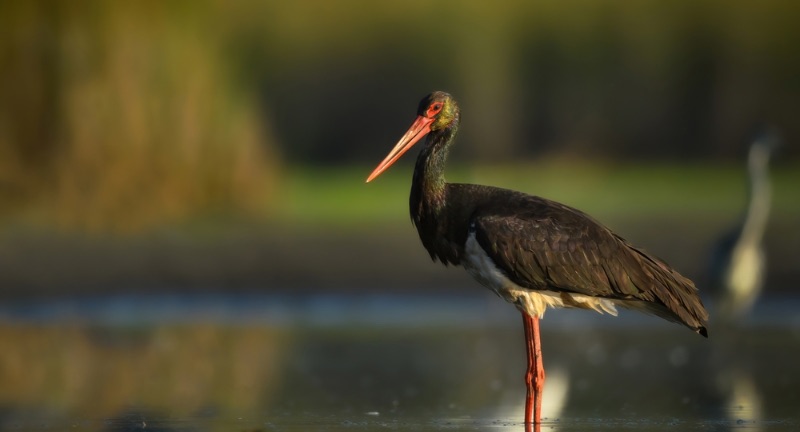
Shutterstock
Get ready to meet one of nature’s most peculiar birds, the stork! These birds have long legs and a knack for building nests the size of small apartments and are way more than just baby delivery mascots. Whether you spot them soaring thousands of miles during migration or clattering their beaks in communication, storks live a pretty full life. If you thought storks were just fancy herons, think again, you’re about to be wowed!
Storks’ Unique Silent Communication

Shutterstock
Unlike most birds that sing or chirp, storks are known for their silent nature. They lack a syrinx, the vocal organ found in birds, which renders them nearly voiceless. Instead, they communicate by clattering their beaks, especially during courtship or when defending their nests. This fascinating behavior has made them one of the more distinctive bird species to observe in the wild.
Long-Distance Fliers

Shutterstock
Storks are incredible long-distance travelers, capable of covering over 500 miles in a single day. Their powerful wings and ability to glide on thermals help them conserve energy during these massive migrations. This allows them to travel from Europe to Africa without excessive effort, making them one of nature’s most efficient migratory birds. Watching a flock of storks glide effortlessly across the sky is truly a spectacular sight.
Thermal Riding Experts

Shutterstock
Storks have mastered the art of riding thermals—rising columns of warm air—to gain altitude without flapping their wings. By using this technique, they can stay airborne for hours with minimal energy expenditure. This is especially useful during long migrations, as it reduces fatigue and increases their travel range. Their skill at gliding on these air currents is a prime example of nature’s ingenuity at work.
Folklore of Baby-Bringing Storks

Shutterstock
The famous story of storks delivering babies is deeply rooted in European folklore. This myth likely originated from the stork’s migratory pattern, where they return to northern Europe around spring—traditionally a time of fertility and new life. In some cultures, storks nesting on rooftops were seen as a blessing for families hoping for children. This charming tale has endured through generations and remains a popular symbol in modern media.
Seasonal Monogamy

Shutterstock
Storks practice a unique form of monogamy, staying loyal to one mate throughout a breeding season. However, this commitment doesn’t always extend beyond the season, as they often seek new partners the following year. Their strong pair bonds during nesting ensure successful raising of their chicks. This seasonal approach to monogamy helps them adapt to varying environmental conditions and maximize reproductive success.
High-Flying Migrants

Shutterstock
During migration, storks have been recorded flying at altitudes exceeding 16,000 feet. This high-flying behavior helps them avoid predators and reduces air resistance, making their journey more efficient. The thin air at such altitudes is challenging for most birds, but storks’ powerful lungs and large wings allow them to soar with ease. Their impressive height during migration makes them one of the most awe-inspiring sights in the bird kingdom.
Gigantic Nest Builders

Shutterstock
Storks are renowned for constructing massive nests, some of which can weigh up to 500 pounds. These nests are built on tall structures such as trees, cliffs, and even rooftops to keep their chicks safe from ground predators. Over time, storks continue to add materials to their nests, resulting in enormous multi-layered structures. In some cases, these nests are used by multiple generations of stork families, becoming iconic landmarks in certain areas.
Symbols of Good Fortune

Shutterstock
In many cultures, storks are seen as symbols of good luck and prosperity. Their graceful presence and tendency to nest near human settlements fostered positive associations throughout history. It was believed that a stork nesting on one’s roof brought protection and blessings to the household. Even today, some people install platforms to attract nesting storks, hoping to invite fortune into their lives.
Marabou Stork’s Record Wingspan

Shutterstock
The marabou stork holds the record for having one of the largest wingspans of any land bird, reaching up to 12 feet. This massive wingspan allows it to glide effortlessly over great distances in search of food. Despite its impressive size, the marabou stork is also known for its scavenging behavior, often seen near carcasses. Its distinctive bald head and large stature make it one of the most recognizable stork species in the world.
Storks’ Voiceless Nature

Shutterstock
Unlike most birds that vocalize with songs or calls, storks are practically voiceless. This is because they lack a syrinx, the vocal organ responsible for producing sound in birds. To communicate, they use a fascinating technique called bill-clattering, which produces a rapid, percussive noise. This unique form of communication is most commonly observed during mating rituals or territorial displays.
Fire Followers

Shutterstock
Storks have a remarkable behavior of following wildfires. As fires spread through grasslands or forests, small animals flee, creating an easy hunting opportunity for the storks. This strategy allows them to catch prey that would otherwise remain hidden in dense vegetation. It’s an impressive example of how storks adapt their feeding habits to take advantage of environmental changes.
Specialized Diets

Shutterstock
Different stork species have highly specialized diets, with some feeding primarily on frogs, while others prefer snakes or fish. This dietary specialization helps reduce competition between species in the same habitat. Storks are opportunistic feeders and can switch their diet based on availability. Their adaptability makes them successful hunters in a variety of environments, from wetlands to arid plains.
Sweeping for Prey

Shutterstock
Painted storks use an ingenious hunting method by sweeping their partially open beaks through shallow water. As they wade through the water, they wait for prey to touch their beak before snapping it shut. This technique is highly effective in murky waters where visibility is low. Their bright, colorful plumage adds an eye-catching contrast to their hunting precision.
Cooperative Hunting

Shutterstock
Storks sometimes hunt in groups, especially when targeting large schools of fish or swarms of insects. By working together, they can corner and capture prey more efficiently than hunting alone. This cooperative behavior enhances their chances of catching food, particularly in difficult environments. Group hunting is a testament to their social intelligence and adaptability in the wild.
Symbols of Devotion in Ancient Cultures

Shutterstock
In ancient Egypt, storks were revered as symbols of parental care and devotion. This belief was inspired by their attentive behavior toward their young. Storks were often depicted in Egyptian art, highlighting their role as protectors of family life. Their strong familial bonds earned them a place in the cultural lore of many early civilizations.
The Largest Stork Nest Ever Recorded

Shutterstock
The largest stork nest ever recorded measured over 9 feet in diameter and weighed more than 600 pounds. Built high up in a tree, it was a marvel of avian architecture. These massive nests aren’t just homes—they are symbols of stability, as storks return to and reinforce their nests year after year. The size and durability of their nests often attract smaller birds, who build their own homes within the larger structure.
Epic Continental Migrations

Shutterstock
Some stork species undertake migrations spanning entire continents, covering thousands of miles each year. They travel from Europe to Africa and back, following ancient migratory routes that have been used for generations. These epic journeys are guided by instinct, magnetic fields, and geographical landmarks like rivers and mountain ranges. Watching a migration of storks in flight is one of nature’s greatest spectacles.
Patience Pays Off: The Stork’s Fishing Skill

Shutterstock
Storks are master fishermen, often standing motionless in shallow water for long periods, waiting for the perfect moment to strike. This patient hunting method ensures they conserve energy while maximizing their catch rate. Their long, sharp beaks allow them to snatch fish and amphibians with incredible speed. This stealthy and calculated approach to hunting showcases the stork’s remarkable adaptability and precision.
Masters of Wetlands and Arid Regions

Shutterstock
Though commonly associated with wetlands, many stork species thrive in arid regions as well. Their ability to forage in different environments, from marshes to dry savannas, sets them apart from many other bird species. This versatility ensures they can find food even in challenging conditions. It’s no wonder they’re found on nearly every continent except Antarctica.
Nests Shared with Other Birds

Shutterstock
Stork nests often become miniature ecosystems, shared with other bird species like sparrows and owls. These smaller birds take advantage of the large, sturdy structures for shelter and safety. It’s not uncommon to see multiple bird species coexisting peacefully in and around a single stork nest. This symbiotic relationship highlights the important role storks play in their environment.
Tool-Using Behavior

Shutterstock
Storks have been observed using tools, such as dropping sticks or leaves onto the water to lure fish. This clever behavior shows a level of intelligence rarely associated with birds outside of crows and primates. By adapting their environment to suit their hunting needs, storks demonstrate problem-solving skills. It’s another reason they stand out as remarkable creatures in the avian world.
Living Long Lives

Shutterstock
Storks are long-lived birds, with some individuals in the wild living for over 30 years. Their longevity is attributed to their strong immune system and ability to adapt to a range of habitats. In captivity, with proper care, they can live even longer, making them one of the longest-lived bird species. Their long lifespan ensures they play a significant role in maintaining the balance of their ecosystems for decades.
The Meaning Behind the Name

Shutterstock
The word “stork” is derived from Old English and means “strong,” a fitting name for these powerful and graceful birds. Their strength is evident in their long migratory flights, large nests, and ability to adapt to various climates. Over centuries, storks have become symbolic of resilience and vitality in many cultures. The etymology of their name adds another layer of meaning to their already fascinating story.
Guardians of Family Lore

Shutterstock
In ancient Greece, storks were seen as guardians of family and loyalty. They were often depicted in myths as creatures devoted to their young and their mates. This belief was so strong that harming a stork was considered a grave offense. Their reputation for nurturing their offspring continues to inspire admiration across the world today.
Desert Crossers

Shutterstock
Storks have been known to cross vast deserts, including the formidable Sahara, during their migrations. This feat requires immense endurance, as they must fly for hours without access to water or food. By riding thermals and minimizing wing flapping, they conserve energy during this perilous journey. Their ability to traverse such harsh landscapes is a testament to their resilience and adaptability.
Nature’s Thermoregulators

Shutterstock
To keep cool in hot climates, storks employ an unusual strategy called urohidrosis, where they urinate on their legs. As the liquid evaporates, it cools their body, similar to how sweat cools humans. This odd but effective cooling method helps them survive in scorching environments. It’s one more example of the stork’s impressive ability to adapt to diverse and challenging conditions.
Rescuers of Ecosystems

Shutterstock
Storks play a vital role in maintaining the balance of ecosystems by controlling populations of small animals and insects. By feeding on rodents, insects, and other small creatures, they help prevent overpopulation and crop damage. This ecological service benefits both natural habitats and human agriculture. Their presence in wetlands and grasslands is a sign of a healthy and thriving ecosystem.
Conclusion

Shutterstock
Storks may not really deliver babies, but they sure deliver when it comes to being interesting! From their massive nests to epic migrations and even tool-using skills, these birds know how to keep things fun. Next time you spot a stork, think about how it might just be plotting its next cross-continental flight or helping control your local rodent population.
More Amazing Animals+
-
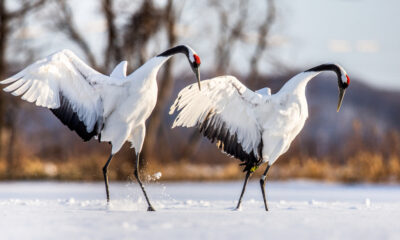

Cranes Are More Interesting Then You May Think, Here Is…
-


Vitakraft’s Squeezable, Hand-Fed Snacks Named Best Cat Treat of 2022
-


Love is in the air: Chihuahuas Peanut and Cashew get…
-


21 Animals That Are Considered Stone Cold Killers
-


Why We Love Penguins
-
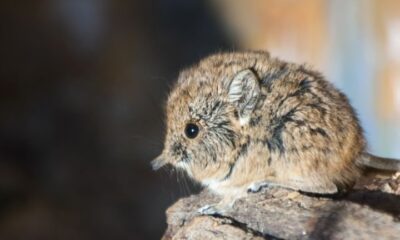

25 Unusual But Undeniably Adorable Baby Animals
-
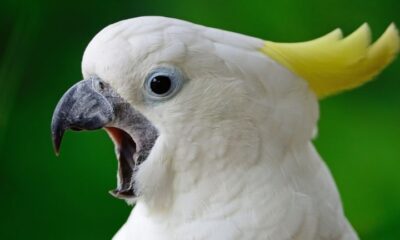

30 Creatures With Astonishingly Loud Calls
-


I’ve got some gorilla duct tape if you want it.…
-


Secrets of the Squirrel Kingdom: 25 Amazing Facts
-
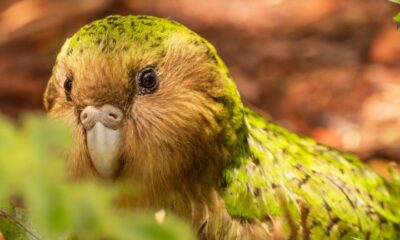

20 Animals At Risk Of Extinction That Need Our Help
-


Chandler, Arizona Police Officer Helps Duck and Her Ducklings Cross…
-
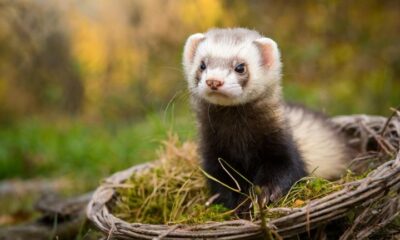

Fascinating Ferrets: 25 Facts About These Mischievous Creatures
